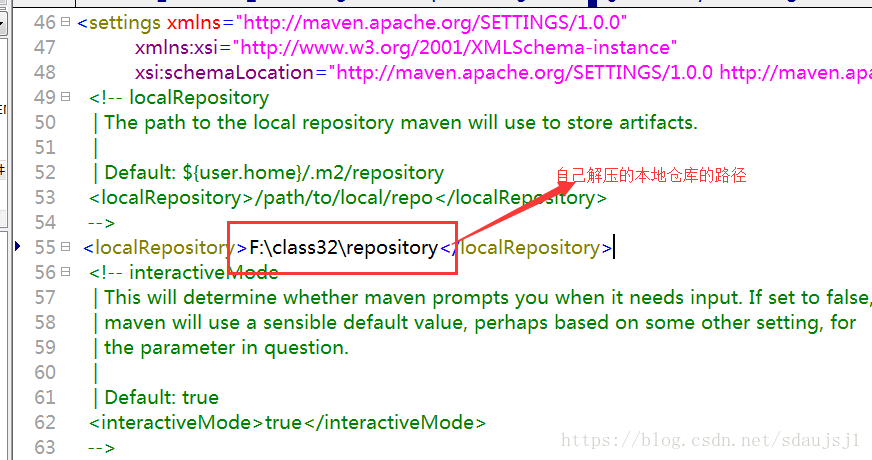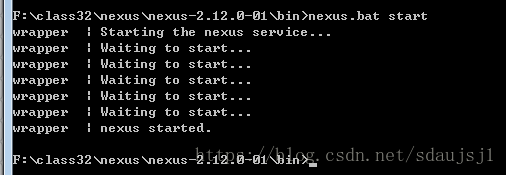maven
1.什么是maven
是apache下的一个开源项目,是纯java开发,并且只是用来管理java项目的
软件开发过程
编码 编译 测试(junit) 运行 打包 部署
2.maven的好处:
依赖管理
一键构建
可以跨平台
应用于大型项目 可以提高开发效率
3.maven仓库
- 本地仓库 本地仓库的目录 默认在c盘用户的.m2/repository下

- 远程仓库(私服)
- 中央仓库
3.maven常用命令
mvn –v 验证maven是否配置成功
mvn clean 清理编译的文件
mvn compile 编译了主目录的文件
mvn test 编译并运行了test目录的代码
mvn package 打包
mvn install 就是把项目发布到本地仓库
Tomcat:run 一键启动(默认是tomcat6)
Tomcat7:run 一键启动 mvn deploy 发布项目
4、maven依赖管理
从网络上搜索
在eclipse中重建索引 以索引的方式搜索 添加依赖
坐标 GAV
<dependencies>
<dependency>
<groupId>cn.panpan</groupId>
<artifactId>ssh</artifactId>
<version>0.0.1-SNAPSHOT</version>
</dependency>
</dependencies>
<build> <!--里面放的是插件 -->
<plugins>
<plugin>
</plugin>
</plugins>
</build>Packaging 三种打包方式 :
- Jar java文件
- war web项目
- pom 父工程
5、maven的jar包依赖范围
- Compile (struts2-core) 编译(compile)时需要测试时需要,运行时需要,打包时需要
- Provided (jsp-api.jar servlet-api.jar) 编译(compile)时需要,测试(test)时也需要,运行时不需要,打包时不需要
- Runtime (数据库驱动包) 编译时不需要,测试时需要,,运行时需要,打包时需要
- Test (junit.jar) 编译时不需要,测试时需要,运行时不需要,打包也不需要
6、maven 传递依赖
一:Maven依赖传递
假如有Maven项目A,项目B依赖A,项目C依赖B。那么我们可以说 C依赖A。也就是说,依赖的关系为:C—>B—>A。
那么我们执行项目C时,会自动把B、A都下载导入到C项目的jar包文件夹中。
这就是依赖的传递性。二:依赖传递的排除
如上,C—>B—>A。加入现在不想执行C时把A下载进来,那么我们可以用 <exclusions>标签。三:依赖冲突与解决
依赖冲突:一个项目A,通过不同依赖传递路径依赖于X,若在不同路径下传递过来的X版本不同,那么A应该导入哪个版本的X包呢?
1、 第一声明优先原则
先声明的版本优先被引用jar包
2、 路径近者优先原则
A—>B—>C—>D—>E—>X(version 0.0.1)
A—>F—>X(version 0.0.2)
则A依赖于X(version 0.0.2)。
自己声明版本号最近。。。
3、 排除原则
<dependency>
<groupId>org.apache.struts</groupId>
<artifactId>struts2-spring-plugin</artifactId>
<version>2.3.24</version>
<exclusions>
<exclusion>
<groupId>org.springframework</groupId>
<artifactId>spring-beans</artifactId>
</exclusion>
</exclusions>
</dependency>通过<exclusions>标签排查具体的jar包4、 版本锁定原则
<properties>
<spring.version>4.2.4.RELEASE</spring.version>
<hibernate.version>5.0.7.Final</hibernate.version>
<struts.version>2.3.24</struts.version>
</properties>
<!-- 锁定版本,struts2-2.3.24、spring4.2.4、hibernate5.0.7 -->
<dependencyManagement>
<dependencies>
<dependency>
<groupId>org.springframework</groupId>
<artifactId>spring-context</artifactId>
<version>${spring.version}</version>
</dependency>
</dependencies>
</dependencyManagement>7、私服 nexus
一、nexus的安装
nexus安装包自行下载。。
1、安装nexus:
2.命令窗口进入安装目录bin目录 输入nexus.bat install

3.启动服务: nexus.bat start

4.启动失败的解决方法: nexus中的wrapper.conf配置jdk的安装目录


5.登录nexus
用户名/密码 admin/admin123
仓库类型:
Virtual 虚拟仓库
Proxy 代理仓库
Hosted 宿主仓库 本地仓库
Group 组分模块开发 把dao层的jar包上传到私服 供service使用
二、上传dao
第一步:需要在客户端即部署dao工程的电脑上配置 maven环境,并修改 settings.xml 文件,配置连接私服的用户和密码。
此用户名和密码用于私服校验,因为私服需要知道上传都的账号和密码 是否和私服中的账号和密码 一致。
<server>
<id>releases</id>
<username>admin</username>
<password>admin123</password>
</server>
<server>
<id>snapshots</id>
<username>admin</username>
<password>admin123</password>
</server>第二步:配置项目pom.xml
配置私服仓库的地址,本公司的自己的jar包会上传到私服的宿主仓库,根据工程的版本号决定上传到哪个宿主仓库,如果版本为release则上传到私服的release仓库,如果版本为snapshot则上传到私服的snapshot仓库
<distributionManagement>
<repository>
<id>releases</id>
<url>http://localhost:8081/nexus/content/repositories/releases/</url>
</repository>
<snapshotRepository>
<id>snapshots</id>
<url>http://localhost:8081/nexus/content/repositories/snapshots/</url>
</snapshotRepository>
</distributionManagement>注意:pom.xml这里 和 settings.xml 配置 对应!
第三步:执行deploy命令发布到私服
三、下载dao
修改maven的settings.xml
<profile>
<!--profile的id-->
<id>dev</id>
<repositories>
<repository>
<!--仓库id,repositories可以配置多个仓库,保证id不重复-->
<id>nexus</id>
<!--仓库地址,即nexus仓库组的地址-->
<url>http://localhost:8081/nexus/content/groups/public/</url>
<!--是否下载releases构件-->
<releases>
<enabled>true</enabled>
</releases>
<!--是否下载snapshots构件-->
<snapshots>
<enabled>true</enabled>
</snapshots>
</repository>
</repositories>
<pluginRepositories>
<!-- 插件仓库,maven的运行依赖插件,也需要从私服下载插件 -->
<pluginRepository>
<!-- 插件仓库的id不允许重复,如果重复后边配置会覆盖前边 -->
<id>public</id>
<name>Public Repositories</name>
<url>http://localhost:8081/nexus/content/groups/public/</url>
</pluginRepository>
</pluginRepositories>
</profile>
<activeProfiles>
<activeProfile>dev</activeProfile>
</activeProfiles>第二步 删除本地仓库中的dao
第三步 update service工程,就可以了

